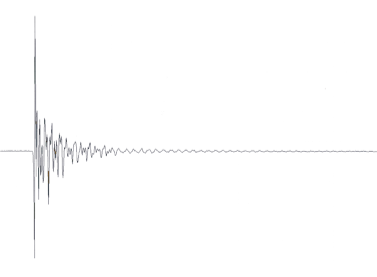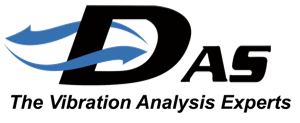


Delaware Analysis Areas of Training
1) Types of Vibration Monitoring Programs - Discussion on the different types of vibration monitoring programs and equipment requirements.
2) Program Development Procedures - How to start a program and set realistic goals
and objectives.
3) Monitoring Program Equipment Reports - What reports should be provided to management for justification of monitoring programs, thus providing a report card on plant vibration program.
4) Basic Vibration Instrumentation - Discussion of different types of equipment used in vibration analysis. Discussed are different types of Sensors, Amplifiers, Recorders Data Collectors and Multi Channel FFT Analyzers.
5) Data Collection - How to setup data bases. An in-depth discussion of setting frequency ranges (Fmax), measures required, sensors required and mounting techniques is provided along with examples based on different types of equipment.
6) Vibration Basics (Calculation of Frequency & Amplitude) - How the analyst uses the time domain data to determine frequency and amplitudes from the time waveform. This is an important concept for all analysts; especially those who are responsible for analysis of Rolling Element Bearings and Gearboxes. Exercises are provided for calculation of frequency and amplitudes.
7) Data Collector and FFT Analyzer Setups - How FFT analyzers work and what setups should be utilized for specific applications to analyze problems.
6) Data Analysis - How to analyze data in a logical step by step manner. Examples are used to reinforce the presentation.
8) Balancing - Four Run no Phase, Single Plane (Influence Coefficient and Measure Effect), Two Plane and Multi-Plane Techniques are presented. Discussion of trial weight selection and placement are presented. Problem exercises are provided to reinforce presentations.
9) Balancing Turbines - How to balance and determine influence coefficients for future balance problems. Discussion of trial weight selection and placement based on Bode and Nyquist plots are provided. Problem exercises are provided to reinforce presentations.
10) Compromise Balancing - How to counter balance thermal sensitivities in rotating equipment. Problem exercises are provided to reinforce presentations.
11) Resonance & Critical Speed Testing - Discussion on various methods to determine critical speed and resonance problems are presented. Both Impact Testing and Transient methods are discussed. Calculation of amplification factors and options to reduce the vibration are provided. Demonstrations are provided to reinforce the presentations.
12) Modal Testing & Operating Deflection Shapes - How to conduct a single degree of freedom Modal Analysis by plotting the Real and Imaginary Components is presented. Demonstrations utilizing impact hammers to develop the mode shapes are presented. The development of Operating Deflection shapes is presented by discussing both single and multi-channel instrumentation.
13) Portable Tape Recorders and their Application - How to use tape recorders and how to choose the correct channels (FM or DR) to utilize for recording. Analog and Digital Tape recorders are discussed. Demonstrations on their applications are provided.
14) Sources of Vibration - Different types of vibration problems (i.e. Alignment, Balance, Looseness, Gearmesh, Pump Flow, etc.), the frequencies generated, how they are generated and direction of the vibration along with symptoms are discussed. Examples of each problem type are discussed and example plots are provided.
15) Turbine Generator Trending and Analysis - What vibration parameters should be trended along with what external parameters influence vibration problems.
16) Pump Trending and Analysis - What vibration parameters should be trended and what to look for in the vibration data.
17) Motor Analysis - What to look for and how to do a quick check and determine if there is an electrical or mechanical problem.
18) Gearbox Trending and Analysis - Frequency calculation and analysis are discussed.
19) Analysis of Motors & Pumps (Case Histories) - Discussion of different types of problems encountered, how the analysis was performed, what equipment was utilized and how the conclusions were drawn.
20) Boiler Feed Pump & Turbine Drive (Case Histories) - Discussion of different types of problems encountered, how the analysis was performed, what equipment was utilized and how the conclusions were drawn.
21) Turbine Generator (Case Histories) - Discussion of different types of problems encountered, how the analysis was performed, what equipment was utilized and how the conclusions were drawn.
22) Economic Justification of Vibration Programs - Calculations using interest rates, cost of money and rate of return to justify program equipment.
Note: Kevin Guy has been an instructor for the Vibration Institute since 1988 where he now heads the Vibration Institute ISO Vibration Certification Training. He specifically teaches Introduction to Vibrations – Certification Category I, Basic Vibration Analysis – Category II, Machinery Vibration Analysis – Category III, Advanced Vibration Control – Category IV and Balancing. All classes including Advanced Vibration Instrumentation and Certification Testing (all Levels) can be provided through Delaware Analysis Services, Inc or the Vibration Institute. Additionally; the Vibration Institute provides Training and Certification in Balancing (Level I and Level II).


A Certified Woman owned Business Enterprise (WBE) and A Certified Minority owned Enterprise (MBE)








Home
Services Provided
Clients
Equipment
Training
Biography
Published Articles
Contact Us







